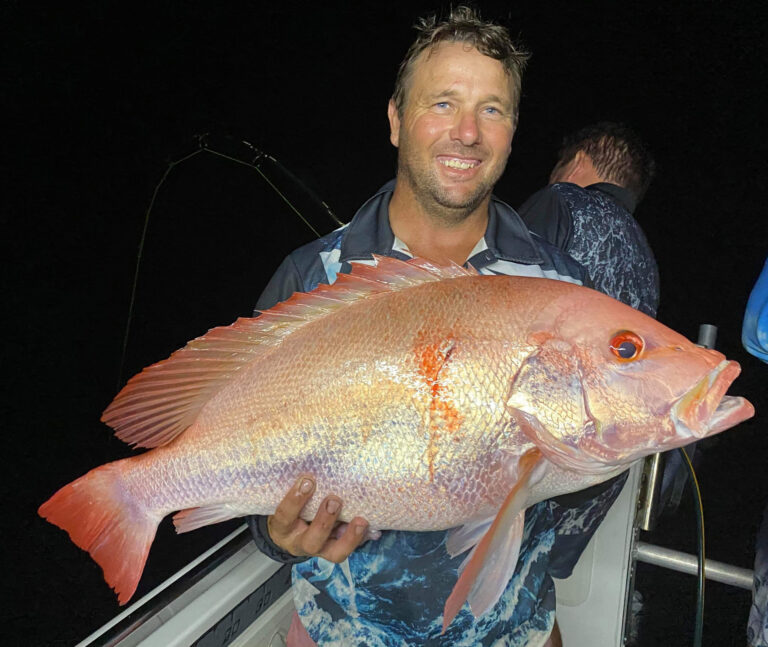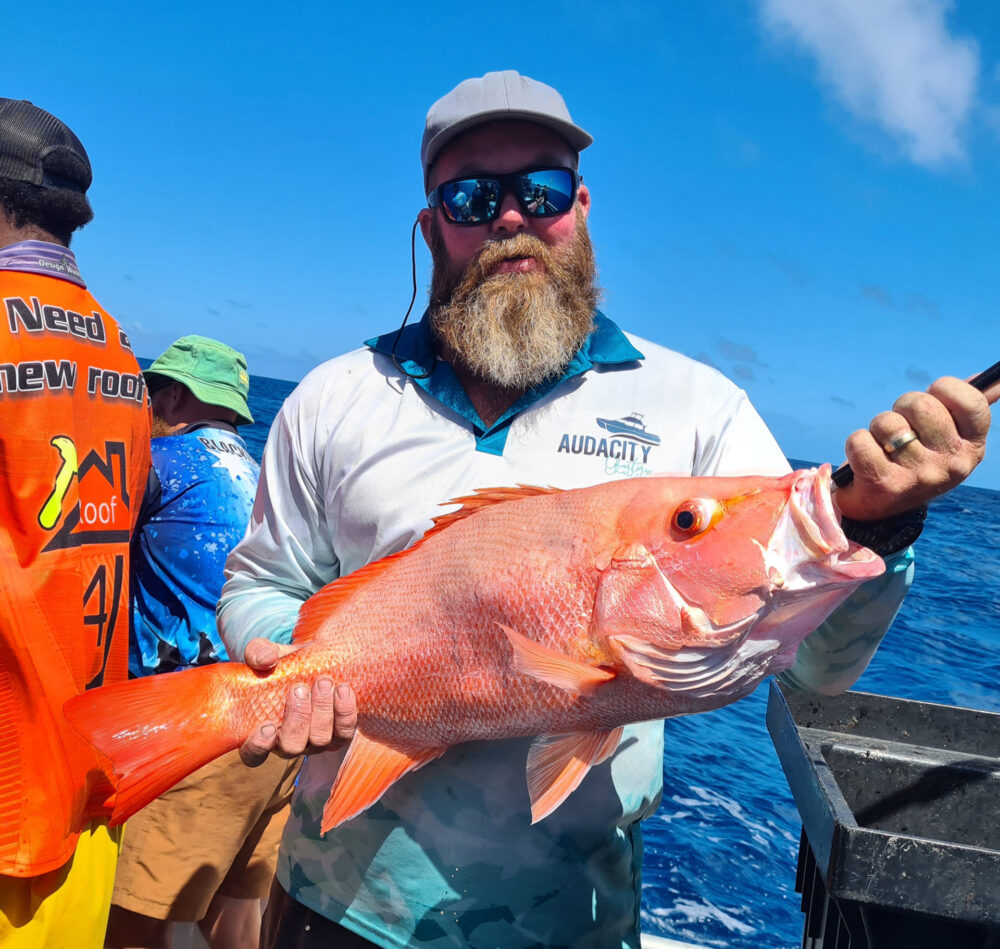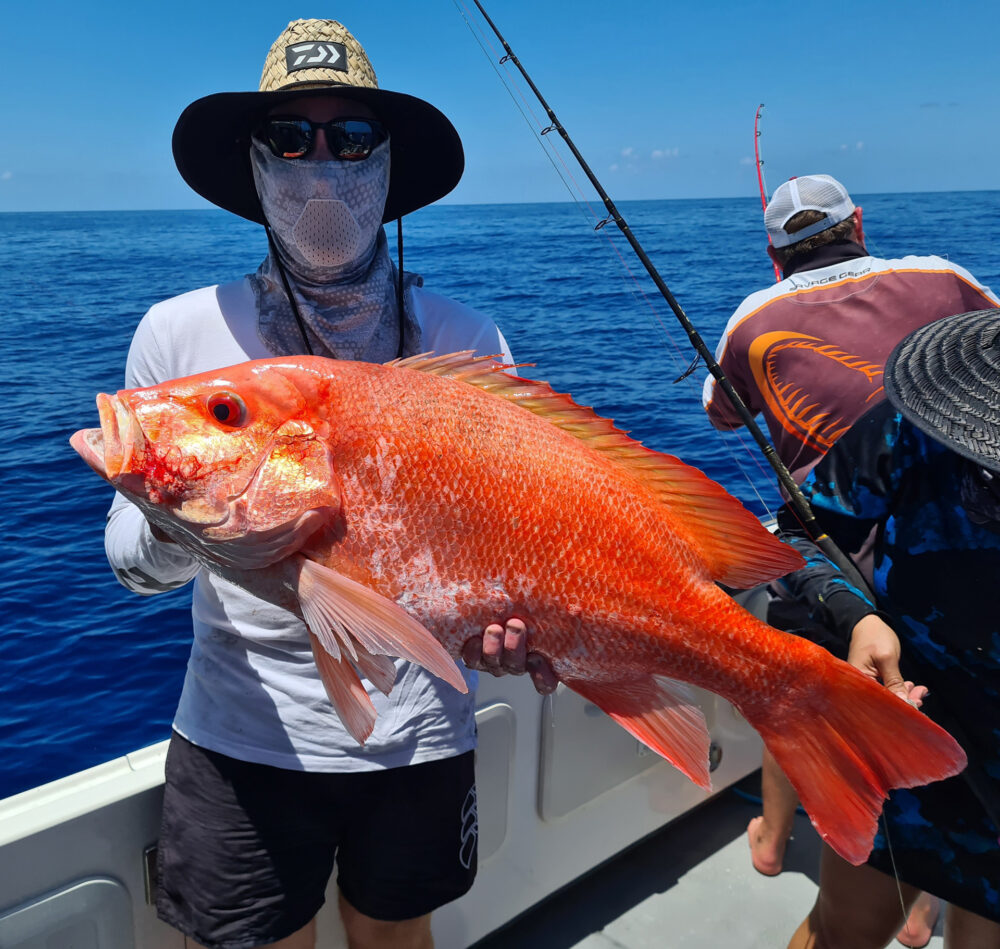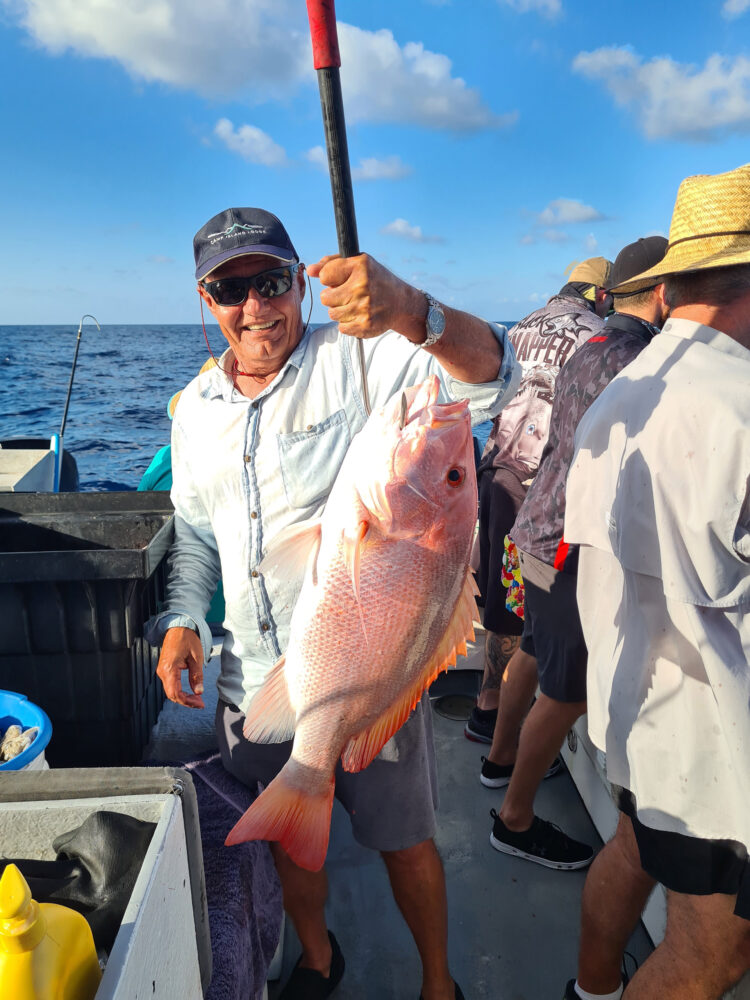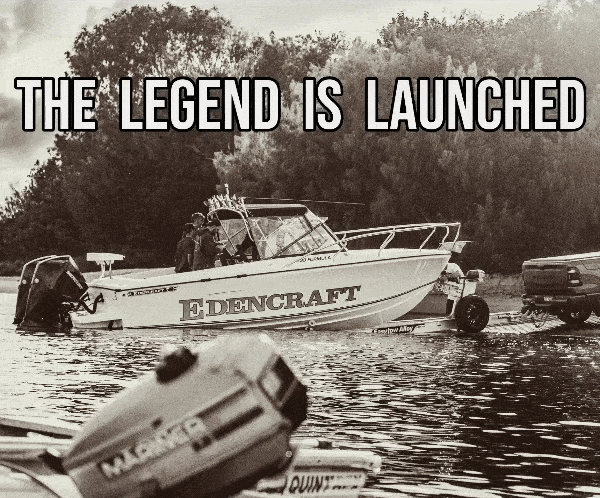Bulk nanny’s for now and into the future – By Adam Finlay
First time writer and to be honest I’d have to say that up until tonight I cannot remember the last time I actually read through a full article in any magazine. If I had to guess I’d say it would have been as far back as in my early teens.
Fast forward 20 years and with countless days on the water, chasing all species possible from a recreational and charter point of view, I just felt it was time to give a little bit of knowledge back into the industry and the new breed of fisherman.
For those that don’t know me, I have fished the Townsville region first recreationally and then as a charter operator totalling over 30 years now. I’ve fished regularly as far north as Cairns and as far south as Mackay.
I sat and pondered for a while trying to decide which species or what subject my first article should be about. It wasn’t a quick or easy decision as our region in North Queensland has an unbelievable spread of quality species both migratory wise as well as residential species. Do I talk about specifically targeting school fish or meter plus barramundi, fingermark, mangrove jacks, offshore species such as Spanish mack’s, GT’s, trout, reef flats species and the list could just go on.
So looking for inspiration, I finally sat and I read my first full article in a very long time in the July edition of Fish and Boat and saw an article by Bill Bowtell.
Now I do not know Bill from a bar of soap and he probably doesn’t know of me either. So it’s with total respect that I write this as Bill’s article outlines some pretty amazing points on fish movements and habits in the paddocks off the Capricorn Coast on large mouth nannygai. Bill touches on some very important points and his article is a must read as you will be able to adapt a lot into chasing largemouth in your area.
My thoughts to myself after reading this was that I can’t write my first ever article on the back of such a good write up. Then I thought that this is actually the best opportunity to help other fishermen and women nut this species out while their minds are refreshed on the topic and allow me to take the conversation to another level.
So Bill, a big thanks for the great read and start up of the conversation.
The large mouth nannygai are a pretty ripe species in our waterways, both inshore and offshore. But with the whole craze of the ‘wonkyhole phenomenon’ an unnecessary pressure has been placed on the inshore fishery areas. Fishing areas are not being respected and I could see the pure decimation of this species into the future within the Townsville inshore fishery areas if we didn’t start looking further for untouched grounds.
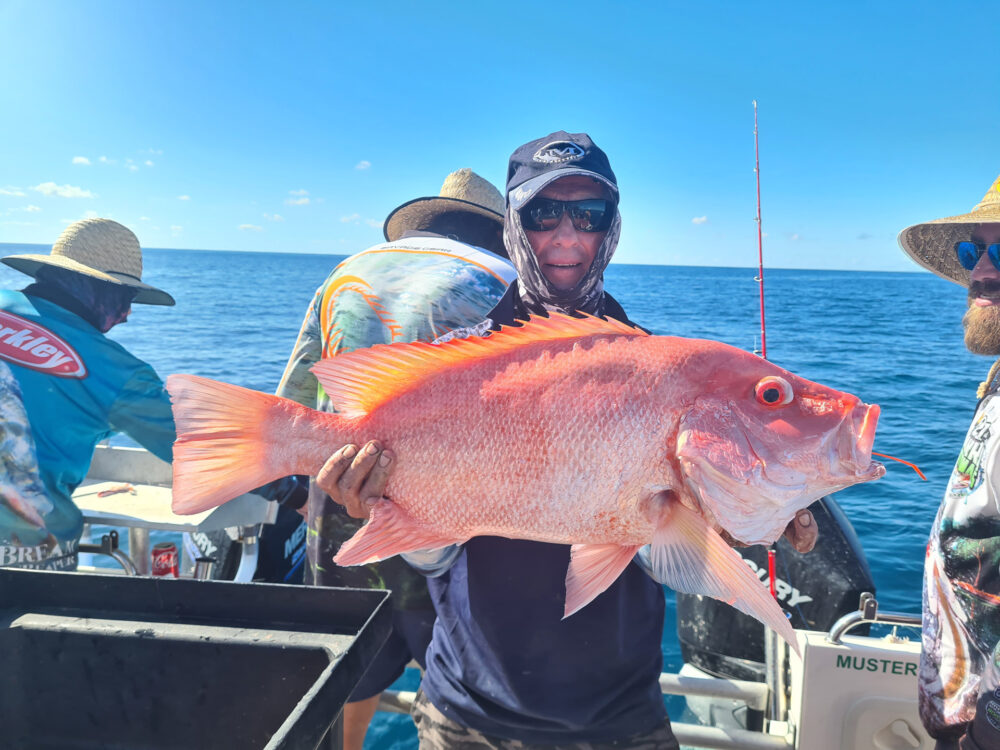
Large mouth nannygai can be found well away from wonky holes. Take the time to look with a little more detail.
With concerns about over fishing in local fishing grounds and then the added strain to fish stock if we added our Charter Operations to the mix, we have set out to find and fish areas that 99% of fisherman wouldn’t go to. In this way we could assist with management of local fish stocks and be able to see from our own stand point what impact we had on this species from a Charter Operators point of view and how we can plan to manage sustainability of fish stock for the future. So we headed out on our 3700 Kevlacat “Audacity” looking for untouched and rarely visited paddocks.
I worked on mothership charters for another company for a number of years. Knowing the culture of skippers I knew I had to fish paddocks where they didn’t spend time in. This also meant the threat of being radar pinged was less likely as most days we don’t see other vessels on the water.
I looked to paddocks, a bit like Bill explains in his article but our paddocks are more than 40nm plus offshore and they are the paddocks found between the reefs.
These areas just naturally look baron in the 45-70m range but in every paddock we have found targeted feeding points where grazing large mouth nannygai are in search of not only crustaceans such as crabs, prawns and bugs, but also cephalopods in the form of squids and cuttlefish.
These all take up a huge percentage of the food habits of the large mouth nannygai. What is very interesting is the stomach content tests to prove your theories and by doing this you will find a lot of the spangled Emperor with pippies and crabs. But you will find most Lutjanus species will actually vomit their content during the fight.
Such paddocks have the most subtle changes in bottom composition from sand, shell grit, mud and so on, but this has been covered in the prior article by Bill. In the areas we solely target large mouth nannygai it is almost impossible to see any difference in sounder readings, they are more found by seeing the odd scattered large mouth nannygai usually just off the bottom, but within the bottom 7 meters or so. If you find 2 or more in the one area then anchor on them.
I never drift on charter. Never. Why? You will just scatter fish and move them on. You also don’t know where they actually are or where they may move to. Once fish are hooked and played then their mates will follow up and then drop off after a while. But the most important aspect of anchoring on a few fish will mean that they all get excited directly under your vessel which then activates more of an intense bite period for you to take advantage of.
These paddock fish can be stirred up prior to dropping anchor by doing numerous circles and figure eights once one or two fish are found. It is very surprising how these fish are actually attracted to the sounds from the vessel and rise up off the bottom when such activity is created. I often hear clients talking to our deckhands muttering words along the lines of ‘why is he just doing circles?’ or ‘does he know we just went over that spot?’ and now you know why. As a precaution, do make sure you are far from a reef as such manoeuvres will also help bring the bulls and whaler sharks to your boat. So some areas you can’t do this trick while in other areas out in the open I’d encourage it.
On our last charter we pulled 84 quality fish in less than 7 hours of fishing, with around 70 of these being large mouth nannygai. The main reason we can produce these numbers is by taking advantage of runs of fish on each of these areas, then moving on to the next and so on. These paddock fish up here are always in the 60-90cm range and once one is hooked they will continue to bite until you have a hiccup. The usual ‘hiccup’ is when you drop a fish more than 5 metres off the bottom. With their nil tolerance to baratrauma these lost fish struggle to swim properly back to the bottom and swim away. I often call large mouth nannygai cattle, and that’s because they will follow their friend. This means they simply swim away with the dropped fish. So, it’s very important to make sure you set the hook hard initially but then keep your pumping actions smooth to not rip lips.
We never take more than 20 fish off one spot, and if they aren’t coming over the side in a timely fashion and there isn’t a tide change or other reason for a lack of fish then we document it, move on and give that area a big break before returning again. We constantly move on if only one or two fish come over. If you are on a spot for more than half an hour and only have a few fish on board then you are doing it wrong or that area isn’t as plentiful so leave for a few months.
You will find once a few areas like this are worked out that 9/10 fish will be large mouth nannygai. You will get the odd red Emperor, chinaman or spango but mainly large mouth nannygai.
I hear so many clients and other anglers talk about finding wonky holes and how great they are, but to be honest we very rarely fish them as they aren’t a sustainable cycle of largemouth population when targeted.
They are usually smaller numbers of bigger breeders and numbers can be decimated very quickly. I have seen this first hand and even with hundreds and hundreds of wonky holes marked and available to us to fish it doesn’t sit well with me for us to fish these fragile ecosystems. The added pressure of us along with the recreational fleet puts too much pressure on them.
Once you start finding paddock fish it takes your fishing to another level and opens up the thought process as to how species such as large mouth nannygai feed differently over all the areas that they can occupy. The large mouth within these Townsville reef paddocks are there all year round. Unlike some of the other large mouth life cycles (wonkys, reef edge, wreck fish, shoal fish etc) these grazing paddocks seem to continue with good stock all year round which definitely helps us keep tabs on how their numbers in that certain area are going. This to me is the most important part of what we do.
I want my daughter in 20 years to have the ability to produce quality fish such as we can now. So documentation, recycling of areas and sometimes great absences from such areas will allow them to continually grow. Education is the key to great fish stocks and this is something all sectors need to be together on.
Cheers


